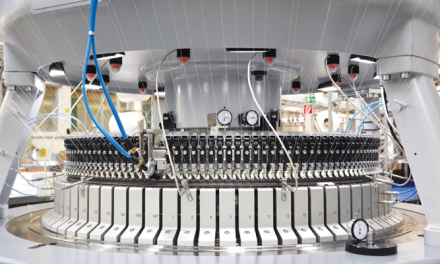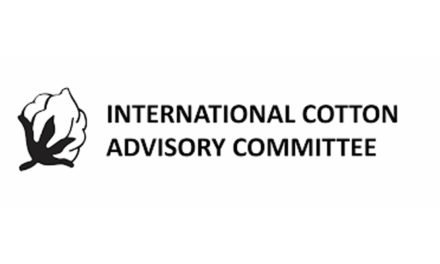 The global nylon-6 market is expected to secure $ 26,040.9 mn in 2032 while expanding at a CAGR of 5.9%. The market is likely to hold a value of $ 14,679 mn in 2022. Growing concern about the environment as well as the demand for nylon-6 in the emerging textile market will make nylon-6 a more attractive product in the market. The incorporation of PA 6 and PA 6, 6 into 3-D printing systems is expected to lead to market growth for nylon-6 in the market. From 2016 to 2021, the market displayed a growth rate of 5.1%.
The global nylon-6 market is expected to secure $ 26,040.9 mn in 2032 while expanding at a CAGR of 5.9%. The market is likely to hold a value of $ 14,679 mn in 2022. Growing concern about the environment as well as the demand for nylon-6 in the emerging textile market will make nylon-6 a more attractive product in the market. The incorporation of PA 6 and PA 6, 6 into 3-D printing systems is expected to lead to market growth for nylon-6 in the market. From 2016 to 2021, the market displayed a growth rate of 5.1%.
Nylon-6 is a polyamide that is semi-crystalline and commonly known as polyamide -6 (PA6). The polymerization of caprolactam leads to the production of polyamide-6. Due to its unique properties, many industries value its strength, durability, and elasticity in the market. As a result of its high pressure, heat, and corrosion resistance, it is highly regarded in the manufacturing industry.
Moreover, nylon-6 is characterized by a variety of physical and chemical properties that make it suitable for a broad range of applications. About 60% of global production of polyamides is composed of nylon-6. Approximately 6.6 mn metric tons of nylon-6 were produced globally in 2013. In a wide variety of applications, both nylon 6 and nylon 66 can be used interchangeably depending on the local availability and the applications that require them in a particular environment. It becomes evident that nylon 66 and nylon 6 have different properties for industrial uses.
In addition to its excellent properties as an engineered thermoplastic, nylon 6 also has good flow properties, moldability, extrusion capability, chemical resistance, and morphological properties. In various applications that involve fused filament fabrication (FFF), nylon 6 is considered a promising candidate in future markets.
What are the Factors Driving the Market Growth of the Nylon-6 Market?
Nylon-6’s versatility in a variety of application sectors is the major factor driving the global market, for applications such as automotive, packaging, electronics & electrical, wires & cables, textiles, films & coating, and others. As a result, the market is expected to benefit from an increase in demand for applications in the above sectors.
Nylon 6 (PA-6) is expected to see a surge in demand as a result of its use in healthcare and musical instruments. Furthermore, nylon 6 market growth continues to be spurred by increased capital investments, higher productivity, and a growing product portfolio. Even though nylon-6 (PA6) is considered to be an ideal material due to its physical and chemical properties, some features may inhibit its use, like its tendency to shrink in molded sections.
The lightweight advantages of nylon 6 result in a reduction in fuel emissions as well as improved fuel efficiency. Transportation has become increasingly dependent on plastics in recent years. Films and coatings are also emerging as a major driver in the food industry where films and coatings are being used to produce flexible packaging with a longer shelf life, such as meat packaging, for example. This sector is dominated by low-cost plastic packagings such as PP, PE, and PVC.
Due to its high dielectric resistance, nylon 6 is considered to be the most preferred polyamide in applications subjected to thermal and mechanical stress. Polymer technologies have increased the potential uses for nylon 66, a material expected to be developed over the next five years. This will significantly increase the market for nylon-6 in the near future.
What are the Limitations to the Nylon-6 Market?
A significant flammable dripping problem and insufficient flame retardance may limit PA6’s use. A growing number of regulations designed to reduce the negative impacts on the environment are hampering the market’s growth. Pollution caused by plastics is one of the biggest challenges the world currently faces. Over-specified products, such as reinforced polypropylene, may inhibit the growth of PA6 as a result of safety reasons in the automotive industry.
Due to the low prices offered by other products like polyvinylidene fluoride, bio-absorbable polymers, and polypropylene, these products pose a threat of substitutes affecting the market growth. Due to their biodegradability, alternative environment-friendly materials like bio-absorbable materials have the potential to pose a serious threat to the environment.
Fishermen’s nets are among the major sources of microplastic pollution in the ocean, created by the breakdown of microscopic plastics. Microplastic pollution in the ocean can have a detrimental impact on marine life. Dyeing fibers can result in significant water pollution, except for synthetic textile fibers which wear off during washing. Since consumers have become more aware and concerned about the environment and health, governments and international organizations have developed methods for monitoring polymers’ adverse effects on the environment. These factors are likely to further hinder nylon 6’s market growth.
Why are Nylon-6 Resins widely preferred?
A type of nylon, nylon 6 is also known as PA6, PA66, or polyamide resin. There are several types of nylon, but nylon 6 and nylon 6,6 are the most commonly used in textile and plastic industries. With a melting point of 265°C, nylon 6,6 exhibits excellent resistance to heat and friction. As a result of this, it is capable of being thermally set in order to preserve its twist.
This dense structure has small, evenly spaced pores, which results in many sites for hydrogen bonds, making this product extremely resilient. its molecular chain has a long length, increasing the number of hydrogen bonds. Consequently, nylon 6,6 resists water stains and nitrous oxide yellowing but is difficult to dye. Once dyed, nylon 6,6 also has superior colorfastness.
There is a wide range of applications for nylon-6 virgin resins because of their excellent technical properties. Automotive applications use them to replace metals, which reduces weight, saves energy, and simplifies production. Additionally, they are used to make polyamide films and extrusion spin carpet yarns, tire cords, and textile yarns. Additionally, manufacturers have products specifically suited to the food industry, the toy industry, and other applications. Additionally, it is a highly recyclable material, making it a sustainable option for the environment. These factors have driven nylon-6 resin demand in the market.
Will the Textiles Industry provide a Maximum boost to the Market for Nylon-6?
Based on end-user, market demand for nylon-6 is segmented into transportation, textile, industrial application, electrical and electronics, and others such as music, healthcare, and coating sector. As a result of the textile market demand, nylon-6 has experienced significant growth in the market. Lightweight and sheer garments made of nylon-6 and nylon66, with good abrasion resistance and extensibility are in high demand in the current market situation. The good elastic quality of nylon fabrics also means that they are able to retain their shape well, owing to their high shape stability in the textile industry.
A wide range of dress materials is made from fabrics made from fine nylon filament. In addition to their recovery behavior, nylon-based faux fur fabrics are highly durable thus the growing market for textiles in the market. It is common to blend wool with nylon to enhance its durability, which is especially important when outerwear or floor coverings are to be manufactured. As nylon fibers are widely used in more and more applications, including the production of technical textiles, nylon filaments are also widely used in parachutes to aid in the safety of the parachute, safety belts for cars, water pipes, and lightweight canvas fabrics used in luggage. Furthermore, nylon filaments are used for a wide range of applications in the automotive and aviation industries, as well as for lightweight canvas for luggage.
How are Start-ups Revolutionizing the Nylon-6 Business?
Many start-ups are bringing nylon-6 products to market due to the rising popularity of resins for outdoor applications. As well as offering regular types for textile use, high-strength nylon-6 is widely used in industrial applications. The majority of nylon-6 is used in textiles, transportation, and electronic devices.
Printscopia was founded in 2020 in Balozi, Latvia. As a provider of online 3D printing services, Printscopia offers on-demand printing. Among the file types that users can submit are STL, FBX, OBJ, and SKP. After receiving confirmation from the company, users submit payments and begin the manufacturing process. PLA, PETG, and PLA-Wood are among the standard materials used in the machine.
Taulman3D was founded in 2011 in the city of Saint Peters, United States. TAULMAN 3D offers a versatile range of additive manufacturing filaments for FFF 3D printers. They are highly tensile and flexible, which sets them apart from other ABS and PLA filaments. Co-development of graphene-enhanced nylon material for 3D printing is being carried out by the company and Graphene 3D lab. The crowdfunding platform Kickstarter raised $68k for Taulman 3D’s six products out of a $185k goal.
June was founded in 2013, in San Francisco, USA A smart top oven brand that is the first to offer its products on the Internet. Sensors built into the oven are capable of detecting weight and automatically setting the temperature result. The app offers a variety of features, including syncing notifications, monitoring videos, and planning meals for the day. Android and iOS users are able to download the mobile app from the app store.
Competition Analysis
Key players in the global nylon-6 market include BASF SE, Honeywell International Inc., DuPont, Royal DSM N.V., UBE INDUSTRIES, LTD., Invista, Formosa Plastics Corporation, Gujarat State Fertilizers and Chemicals, June, Taulman 3D, Printscopia and others.
In September 2022, CORDURA® re/cor™ Recycled Nylon 6,6 (RN66) platform was launched by Material ConneXion, a manufacturer of recycled polymers, which has accepted the CORDURA re/cor RN66 collection that features ten new CORDURA re/cor RN66 fabrics onto its platform. In Bangkok, Milan, Daegu, Skövde, Tokyo, and New York, Material ConneXion will showcase award-winning fabrics, including the new CORDURA re/cor RN66 footwear styles. Specifically, this nomination points out CORDURA’s commitment to encouraging the business community to Expect More, Waste Less and highlights CORDURA’s authorized long-standing mill partners Dong Jin and Tiong Liong Corp. (TLC).
In October 2022, Grupa Azoty resumed fertilizer production at its Tarnow, southeast Poland site following changes in market conditions. On 12 October, the company announced that nitrogen fertilizer production had been resumed at Tarnow, along with caprolactam (Capro) and nylon 6 (also known as polyamide 6, PA6).





















